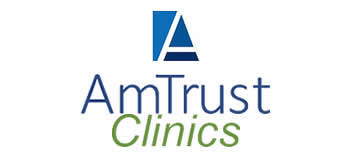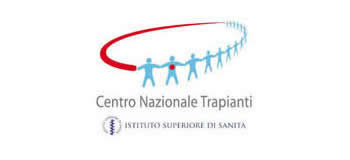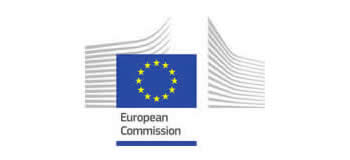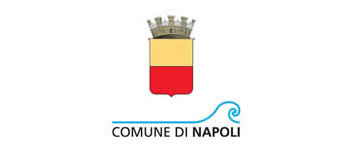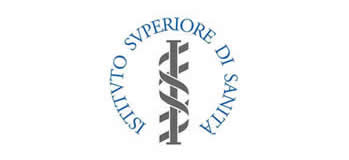
DON’T GIVE UP
We know how frustrating it can be to see your hopes vanish in front of yet another failure. Feeling, once again, on the verge of giving up on the dream of becoming a mom or dad forever.
But Don’t give up!
Concrete results
Thousands of couples arrive at CFA after numerous failed IVF cycles carried out in other centres.
This privilege has not only enhanced our compassion for these patients but, above all, has given us the rare opportunity to acquire a high level of expertise in the treatments of couples with repeated failures. In fact we are proud to say, we have the highest success rates in Italy for this category of patient.
We believe that our excellent results are mainly due to three factors:

1) Our exclusive “holistic approach” where we take into consideration the couple from every angle, without neglecting any aspect (from nutrition to psychology, from gynaecology to embryology).

2) Our team of specialists who study in detail the events in the previous failed cycles and then formulate a customized protocol for the forthcoming attempt at CFA.

3) Our extensive experience in the field, combined with our profound humanity, which puts couples at ease, transforming their frustration into renewed trust.
Our services
Are you thinking of embarking on an assisted reproduction journey? The first step is to book a consultation with our professionals. Every story is unique and therefore every single patient – as well as every couple – is invited to talk about their journey and their goals, in order to evaluate together what are the steps to take for a totally personalized assisted reproduction process.
Embryo transfer, perhaps the most important moment in ART, is where the embryo is literally transferred from the laboratory to the woman’s uterus. Embryo transfer is a delicate procedure, but one that shouldn’t cause concern for the patient. The fear of failing ART and therefore seeing their dream fail, causes psychological stress and therefore we invite our patients to relax at CFA for about an hour after embryo transfer. It is not absolutely not necessary to stay in bed after transfer, but our advice is to resume daily activities, avoid excessive physical exertion, sources of stress and maintain a healthy diet.
In this simple technique, semen is collected by masturbation from the male and treated in the laboratory to collect the highest number of motile sperm free from the semen liquid. It is concentrated into a small volume and transferred via a plastic catheter into the womans uterine cavity. IUI is a simple technique with a very modest success rate of 7-8%
and can only be applied to couples with normal sperm samples, open fallopian tubes and good ovulation that often needs to be primed pharmaceutically.
During a menstrual cycle, the ovary normally produces only one mature oocyte for ovulation. In order to improve chances of a pregnancy, ART procedures require a protocol of ovarian stimulation, with naturally occurring hormones, generally FSH, to generate several mature oocytes. There are many general protocols for stimulation using different hormones, but in all cases the actual protocol depends on the age and physiology of the woman and the type of ART procedure to be used.
There are three types of pharmaceuticals used for ovarian stimulation:
1. Gonadotrphins
2. Agonists and antagonists of GnRH
3. Different triggers to induce ovulation such as hCG.
Ovarian stimulation with FSH is usually performed by daily sub-cutaneous injections of FSH lasting 9-12 days.
IVF was first used over 40 years ago and upto date has led to the birth of over 10 million babies worldwide. This technique is the core procedure for ART
and involves immersing the womans eggs in a drop of culture medium containing spermatozoa of the partner. The fertilized eggs are then left to develop
in culture for upto 5 days and then subsequently transferred
into the womans
uterus with a
fine soft plastic cannula.
Heterologous fertilization is a medically assisted procreation technique which is used in couples with impaired gamete function. In this technique one, or both, of the gametes are replaced by gametes from an external donor.
IMSI, intracytoplasmic injection of morphologically selected sperm, permits the selection of the best sperm, using a high-magnification microscope, without staining and in real time Numerous studies show that the ICSI technique associated with high magnification sperm selection allows for greater success and a higher pregnancy index, especially in cases where sperm alterations are associated with a high DNA fragmentation index.
The IMSI technique is offered where:
• ICSI has previously failed
• for severe teratozoospermia;
• there is high DNA fragmentation in the spermatozoa
• in idiopathic,
• or unexplained, infertility.
ICSI, used for the first time in 1992, is an assisted reproduction technique which in recent years has revolutionized the treatment of male infertility, giving men with few sperm cells the possibility of becoming a father.
With this technique, thanks to sophisticated equipment, the single sperm is injected directly into the oocyte.
ICSI is applied:
– as a result of repeated failures with IVF
– in case of endometriosis
– in the presence of severe male sterility and frozen semen and/or oocytes
In order to maximize the success rates, the woman is subjected to hormonal stimulation (induction of multiple ovulation) in order to recruit as many oocytes as possible.
AZH is a micro-surgical procedure performed on embryos to create a lesion in the zona pellucida, the eggs protective coat, to increase the chances of implantation and pregnancy. The embryo, after reaching the blastocyst stage, must hatch out of the envelope that surrounds it, called the “zona pellucida”, to then implant itself in the uterus and begin to receive oxygen and nutrients from the mother. AZH allows the zona pellucida of the embryo to be thinned using a laser before transfer to the uterus. In this way we favour the implantation of the embryo in to the uterine wall.
It is recommended:
– in women of advanced reproductive age (>38 years)
– when the levels of follicle stimulating hormone (FSH), on the third day, are particularly high
– in cases of repeated failures with in vitro fertilization techniques
– when, simply, a thickened zona pellucida is visible in the embryo.
Egg donation is the donation of eggs by a woman to another woman. This assisted fertilization technique takes place in complete anonymity, to respect the privacy of both the donor and the recipient. Choosing to donate your own oocytes is an act of great sensitivity, as it allows many couples to make their dreams come true. In fact, many women, due to pathologies, treatments such as chemotherapy or radiotherapy or age, have problems with their oocytes and today, fortunately, they can resort to egg donation. Eggs can be donated by healthy young women who are free from hereditary diseases. Egg donation is a gift, a gesture of solidarity, by which many women have conceived and given birth to their long wanted child.
Sperm donation is a voluntary act that allows men to donate their sperm so that it can be used in assisted reproduction techniques, helping many couples who are unable to have children. Sperm donation, like egg donation, takes place completely anonymously and not before the donor has undergone a series of genetic tests to avoid the risk of hereditary diseases. The sperm itself undergoes a period of quarantine in which it is ensured that there are no sexually transmitted diseases present.
The technique, called freeze all, has emerged as an alternative to fresh embryo transfer (ET) during in vitro fertilization (IVF) cycles. This procedure consists in the freezing and cryppreservation of all oocytes or embryos obtained from ART to transfer in a subsequent natural cycle.
We speak of Dual stimulation or DuoStim when during a single menstrual cycle two stimulations and two collections of oocytes are performed in the follicular and luteal phases. The DuoStim protocol is particularly effective in women in whom it is necessary to optimize the ovarian reserve, such as cancer patients or elderly patients.
TESE, testicular sperm extraction (or testicular biopsy) involves the extraction of small pieces of testicular tissue by a surgeon which is then immediately controlled in the laboratory for the presence of spermatozoa under the microscope. The tissue, after being classified as containing sperm, is then frozen for subsequent use in IVF. Thanks to this technique many azospermic men have been able to father children.
Egg donation and sperm donation are completely anonymous and volountary gestures from men and women to give couples, with gamete defects, the opportunity to procreate. Donors undergo a series of tests, which include hereditary diseases and sexually transmitted diseases before donating their gametes.
Miscarriage is the most frequent cause of pregnancy loss. Where two consecutive episodes of abortion occur in a woman within the 20th week of pregnancy then the term recurrent miscarriage is used. In these cases, it is necessary to carry out genetic and infective tests to understand the possible causes. The two strategies used to reduce this phenomenon are the study of the endometrium and physiology of the woman and study of the chromosomal complement of the embryo using PGT.
When choosing to embark in ART, both partners need psychological support. In fact, we must not underestimate the effect that stress can have, not only in the presence of any IVF failure, but also during the entire period of examinations and treatments to which one undergoes before the transfer. At CFA, our patients are supported by our pscychologists from the first consultation to the realization of their dream of parenthood.
Are you thinking of embarking on an assisted reproduction journey? The first step is to book a consultation with our professionals. Every story is unique and therefore every single patient – as well as every couple – is invited to talk about their journey and their goals, in order to evaluate together what are the steps to take for a totally personalized assisted reproduction process.
Embryo transfer, perhaps the most important moment in ART, is where the embryo is literally transferred from the laboratory to the woman’s uterus. Embryo transfer is a delicate procedure, but one that shouldn’t cause concern for the patient. The fear of failing ART and therefore seeing their dream fail, causes psychological stress and therefore we invite our patients to relax at CFA for about an hour after embryo transfer. It is not absolutely not necessary to stay in bed after transfer, but our advice is to resume daily activities, avoid excessive physical exertion, sources of stress and maintain a healthy diet.
In this simple technique, semen is collected by masturbation from the male and treated in the laboratory to collect the highest number of motile sperm free from the semen liquid. It is concentrated into a small volume and transferred via a plastic catheter into the womans uterine cavity. IUI is a simple technique with a very modest success rate of 7-8%
and can only be applied to couples with normal sperm samples, open fallopian tubes and good ovulation that often needs to be primed pharmaceutically.
During a menstrual cycle, the ovary normally produces only one mature oocyte for ovulation. In order to improve chances of a pregnancy, ART procedures require a protocol of ovarian stimulation, with naturally occurring hormones, generally FSH, to generate several mature oocytes. There are many general protocols for stimulation using different hormones, but in all cases the actual protocol depends on the age and physiology of the woman and the type of ART procedure to be used.
There are three types of pharmaceuticals used for ovarian stimulation:
1. Gonadotrphins
2. Agonists and antagonists of GnRH
3. Different triggers to induce ovulation such as hCG.
Ovarian stimulation with FSH is usually performed by daily sub-cutaneous injections of FSH lasting 9-12 days.
IVF was first used over 40 years ago and upto date has led to the birth of over 10 million babies worldwide. This technique is the core procedure for ART
and involves immersing the womans eggs in a drop of culture medium containing spermatozoa of the partner. The fertilized eggs are then left to develop
in culture for upto 5 days and then subsequently transferred
into the womans
uterus with a
fine soft plastic cannula.
Heterologous fertilization is a medically assisted procreation technique which is used in couples with impaired gamete function. In this technique one, or both, of the gametes are replaced by gametes from an external donor.
IMSI, intracytoplasmic injection of morphologically selected sperm, permits the selection of the best sperm, using a high-magnification microscope, without staining and in real time Numerous studies show that the ICSI technique associated with high magnification sperm selection allows for greater success and a higher pregnancy index, especially in cases where sperm alterations are associated with a high DNA fragmentation index.
The IMSI technique is offered where:
• ICSI has previously failed
• for severe teratozoospermia;
• there is high DNA fragmentation in the spermatozoa
• in idiopathic,
• or unexplained, infertility.
ICSI, used for the first time in 1992, is an assisted reproduction technique which in recent years has revolutionized the treatment of male infertility, giving men with few sperm cells the possibility of becoming a father.
With this technique, thanks to sophisticated equipment, the single sperm is injected directly into the oocyte.
ICSI is applied:
– as a result of repeated failures with IVF
– in case of endometriosis
– in the presence of severe male sterility and frozen semen and/or oocytes
In order to maximize the success rates, the woman is subjected to hormonal stimulation (induction of multiple ovulation) in order to recruit as many oocytes as possible.
AZH is a micro-surgical procedure performed on embryos to create a lesion in the zona pellucida, the eggs protective coat, to increase the chances of implantation and pregnancy. The embryo, after reaching the blastocyst stage, must hatch out of the envelope that surrounds it, called the “zona pellucida”, to then implant itself in the uterus and begin to receive oxygen and nutrients from the mother. AZH allows the zona pellucida of the embryo to be thinned using a laser before transfer to the uterus. In this way we favour the implantation of the embryo in to the uterine wall.
It is recommended:
– in women of advanced reproductive age (>38 years)
– when the levels of follicle stimulating hormone (FSH), on the third day, are particularly high
– in cases of repeated failures with in vitro fertilization techniques
– when, simply, a thickened zona pellucida is visible in the embryo.
Egg donation is the donation of eggs by a woman to another woman. This assisted fertilization technique takes place in complete anonymity, to respect the privacy of both the donor and the recipient. Choosing to donate your own oocytes is an act of great sensitivity, as it allows many couples to make their dreams come true. In fact, many women, due to pathologies, treatments such as chemotherapy or radiotherapy or age, have problems with their oocytes and today, fortunately, they can resort to egg donation. Eggs can be donated by healthy young women who are free from hereditary diseases. Egg donation is a gift, a gesture of solidarity, by which many women have conceived and given birth to their long wanted child.
Sperm donation is a voluntary act that allows men to donate their sperm so that it can be used in assisted reproduction techniques, helping many couples who are unable to have children. Sperm donation, like egg donation, takes place completely anonymously and not before the donor has undergone a series of genetic tests to avoid the risk of hereditary diseases. The sperm itself undergoes a period of quarantine in which it is ensured that there are no sexually transmitted diseases present.
The technique, called freeze all, has emerged as an alternative to fresh embryo transfer (ET) during in vitro fertilization (IVF) cycles. This procedure consists in the freezing and cryppreservation of all oocytes or embryos obtained from ART to transfer in a subsequent natural cycle.
We speak of Dual stimulation or DuoStim when during a single menstrual cycle two stimulations and two collections of oocytes are performed in the follicular and luteal phases. The DuoStim protocol is particularly effective in women in whom it is necessary to optimize the ovarian reserve, such as cancer patients or elderly patients.
TESE, testicular sperm extraction (or testicular biopsy) involves the extraction of small pieces of testicular tissue by a surgeon which is then immediately controlled in the laboratory for the presence of spermatozoa under the microscope. The tissue, after being classified as containing sperm, is then frozen for subsequent use in IVF. Thanks to this technique many azospermic men have been able to father children.
Egg donation and sperm donation are completely anonymous and volountary gestures from men and women to give couples, with gamete defects, the opportunity to procreate. Donors undergo a series of tests, which include hereditary diseases and sexually transmitted diseases before donating their gametes.
Miscarriage is the most frequent cause of pregnancy loss. Where two consecutive episodes of abortion occur in a woman within the 20th week of pregnancy then the term recurrent miscarriage is used. In these cases, it is necessary to carry out genetic and infective tests to understand the possible causes. The two strategies used to reduce this phenomenon are the study of the endometrium and physiology of the woman and study of the chromosomal complement of the embryo using PGT.
When choosing to embark in ART, both partners need psychological support. In fact, we must not underestimate the effect that stress can have, not only in the presence of any IVF failure, but also during the entire period of examinations and treatments to which one undergoes before the transfer. At CFA, our patients are supported by our pscychologists from the first consultation to the realization of their dream of parenthood.
Why choose CFA?
Save resources (time and cost) thanks to the presence on site of many different complementary professionals. A truly one stop organization.
Absolute transparency of information that at each stage is available to the patient.
Optimal success rates, also thanks to our holistic approach which optimizes results through a path of awareness and preparation of the couple.
The combination of different professional skills working towards the same objective, to make complete assessments and find integrated solutions.
Safety guarantee: CFA has been nominated by state authorities to be among the top 5 centres in Italy for Quality Control, boasting some of the highest quality standards ever.


